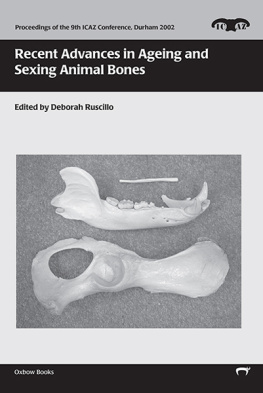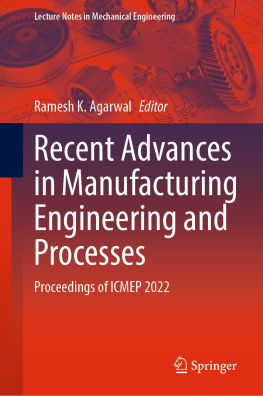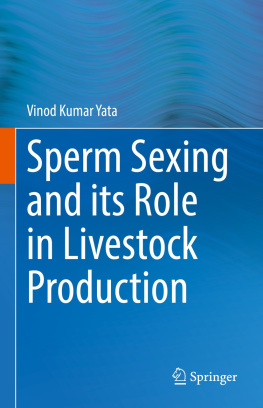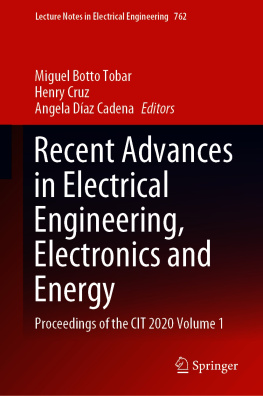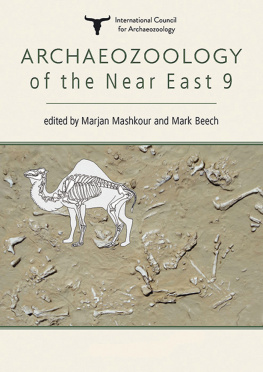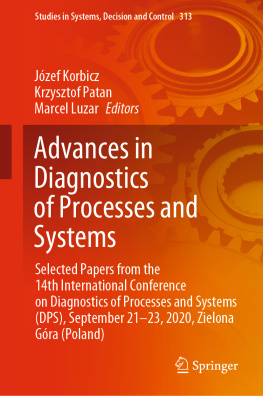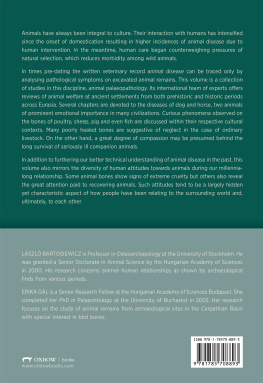
For Vasili and Marilena
Published by
Oxbow Books, Park End Place, Oxford OX1 1HN
Oxbow Books and the individual authors 2006
ISBN: 9781785700422
PDF ISBN: 9781785700453
EPUB ISBN: 9781785700439
PRC ISBN: 9781785700446
A CIP record for this book is available from The British Library
This book is available direct from
Oxbow Books, Park End Place, Oxford OX1 1HN
(Phone: 01865241249; Fax: 01865794449)
and
The David Brown Book Company
PO Box 511, Oakville, CT 06779, USA
(Phone: 8609459329; Fax: 8609459468)
and
via our website
www.oxbowbooks.com
Cover image: Ursus americanus baculum, mandible and innominate,
photo taken by Haskel Greenfield
Printed in Great Britain at
Antony Rowe, Chippenham
Contents
Umberto Albarella, Keith Dobney and Peter Rowley-Conwy
T. P. OConnor
K. Dammers
Richard J. Carter
Deborah Ruscillo
Haskel J. Greenfield
M. A. Zeder
T. E. Steele
J. G. Enloe and E. Turner
A. R. Millard
G. G. Jones
S. Louguet
O. Magnell
L. Bartosiewicz
M.-E. Brodeur
R. F. Carden and T. J. Hayden
K. Lyublyanovics
J. Weinstock
L. Sedlkov
Preface
Umberto Albarella, Keith Dobney and Peter Rowley-Conwy
This book is one of several volumes which form the published proceedings of the 9th meeting of the International Council of Archaeozoology (ICAZ), which was held in Durham (UK) 23rd28th August 2002. ICAZ was founded in the early 70s and has ever since acted as the main international organisation for the study of animal remains from archaeological sites. The main international conferences are held every four years, and the Durham meeting the largest ever follows those in Hungary, the Netherlands, Poland, England (London), France, USA, Germany and Canada. The next meeting will be held in Mexico in 2006. The Durham conference which was attended by about 500 delegates from 46 countries was organised in 23 thematic sessions, which attracted, in addition to zooarchaeologists, scholars from related disciplines such as palaeoanthropology, archaeobotany, bone chemistry, genetics, mainstream archaeology etc.
The publication structure reflects that of the conference, each volume dealing with a different topic, be it methodological, ecological, palaeoeconomic, sociological, historical or anthropological (or a combination of these). This organisation by theme rather than by chronology or region, was chosen for two main reasons. The first is that we wanted to take the opportunity presented by such a large gathering of researchers from across the world to encourage international communication, and we thought that this could more easily be achieved through themes with world-wide relevance. The second is that we thought that, by tackling broad questions, zooarchaeologists would be more inclined to take a holistic approach and integrate their information with other sources of evidence. This also had the potential of attracting other specialists who shared an interest in that particular topic. We believe that our choice turned out to be correct for the conference, and helped substantially towards its success. For the publication there is the added benefit of having a series of volumes that will be of interest far beyond the restricted circle of specialists on faunal remains. Readers from many different backgrounds, ranging from history to zoology, will certainly be interested in many of the 14 volumes that will be published.
Due to the large number of sessions it would have been impractical to publish each as a separate volume, so some that had a common theme have been combined. Far from losing their main thematic focus, these volumes have the potential to attract a particularly wide and diverse readership. Because of these combinations (and because two other sessions will be published outside this series) it was therefore possible to reduce the original 24 sessions to 14 volumes. Publication of such a series is a remarkable undertaking, and we are very grateful to David Brown and Oxbow Books for agreeing to produce the volumes.
We would also like to take this opportunity to thank the University of Durham and the ICAZ Executive Committee for their support during the preparation of the conference, and all session organisers now book editors for all their hard work. Some of the conference administrative costs were covered by a generous grant provided by the British Academy. Further financial help came from the following sources: English Heritage, Rijksdienst voor het Oudheidkundig Bodemonderzoek (ROB), County Durham Development Office, University College Durham, Palaeoecology Research Services, Northern Archaeological Associates, Archaeological Services University of Durham (ASUD), and NYS Corporate Travel. Finally we are extremely grateful for the continued support of the Wellcome Trust and Arts and Humanities Research Board (AHRB) who, through their provision of Research Fellowships for Keith Dobney and Umberto Albarella, enabled us to undertake such a challenge.
The present volume publishes the proceedings of the session Ageing and Sexing, which was among the first to be proposed for ICAZ 2002 and ended up being one of the strongest and best attended. This was in large part due to Deborah Ruscillos excellent organisational skills, but also to the inherent interest and appropriateness of this subject for an ICAZ conference. Whether we study material from Argentina or Japan, from the Palaeolithic or the medieval period, we still need to deal with the issue of ageing and sexing animal bones. A methodological session may be of little interest outside the field of zooarchaeology, but this is compensated for by the fact that all animal bone specialists will be interested in it. Initially Deborah wanted simply to find the best venue to present her interesting new method of sexing mammal bones through shape analysis. However, here was an opportunity to be more ambitious and organise a whole session dedicated to sexing and ageing studies. Things went ahead as planned and this book represents the culmination of almost three years of work, begun with a cosy conversation in the warm environment of the Ruscillo/Cosmopoulos home in Winnipeg (as the external temperature approached minus 30C!).
The publication in 1982 of the volume Ageing and sexing animal bones from archaeological sites, edited by Bob Wilson, Caroline Grigson and Sebastian Payne, represented a milestone in the development of zooarchaeological studies, and the book is, unsurprisingly, one of the most cited publications in zooarchaeology. Since then, as Terry OConnor highlights in his introduction to the present volume, much more work has been done in refining ageing and sexing methods and in improving our understanding of body development and sexual variation in the vertebrate skeleton. However, so far zooarchaeologists are still by and large adopting ageing and sexing methods that are pre- rather than post- 1982. The challenge of this book is therefore not just to add more information, but also to persuade zooarchaeologists that the time is ripe for experimenting with new methods and for analysing data by taking into account the substantial new advances that this discipline has produced in more recent years. Only time will tell if this volume will have achieved this ambitious goal, but whatever the case, we have little doubt that it will represent an indispensable tool for zooarchaeologists worldwide.
Next page
